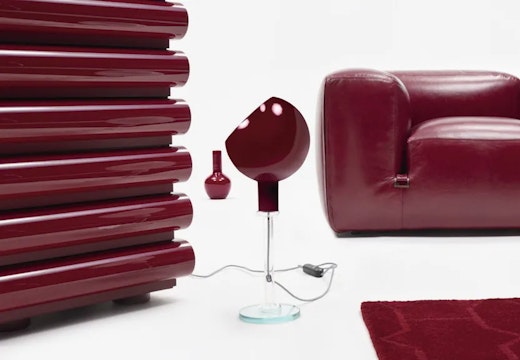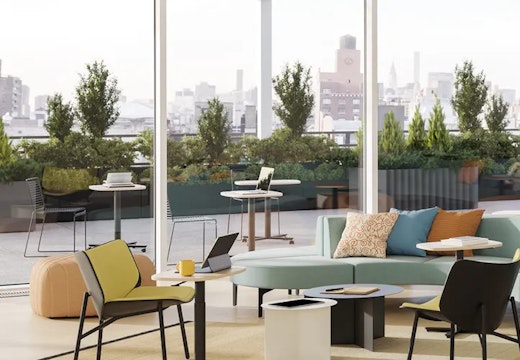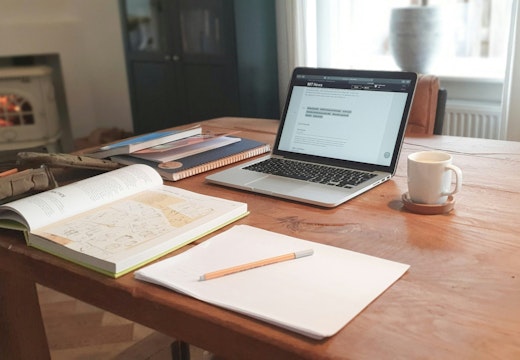New insights into inclusive design for complex buildings
Architectural firm HOK has extended its focus on designing for neurodiversity from the workplace to a range of other environments including science labs, sports venues, airports and courtrooms
Designing for neurodiversity to support more diverse employment will fall short if it does not extend to the built environment beyond the office, according to a new report from architectural firm HOK.
Its latest research, entitled ‘Inclusive Design For Complex Buildings’, discusses how design for neurodiverse people can be effectively embedded into other spaces such as healthcare environments, laboratories, airports, sports arenas and courtrooms.
HOK has pioneered new approaches to create more inclusive workplaces over the past five years. Its research report ‘Designing a Neurodiverse Workplace’ has been widely cited as a key guide in the field.
Now, however, the firm is bringing key principles from its neurodiversity research into new, broader terrain. The move is a deliberate one, says HOK’s Director of Workplace Kay Sargent: ‘We’ve reached a critical point in how we think about neurodiverse needs in relation to the built environment.’
HOK’s new report, which features in the latest edition of HOK Forward, states that around 15 per cent of the global population has some kind of neurodevelopmental disorder. This can equate to being hypersensitive to stimuli such as noise, certain types of lighting or certain situations that can overwhelm, or it can mean that someone is hyposensitive and needs more stimulation than others.
‘Around 15 per cent of the global population has some kind of neurodevelopmental disorder…’
Designers who are thinking about neurodiversity can ensure that the needs of all employees –neurodiverse or not – are met and that the spaces they encounter are welcoming and calming for all individuals. But without full engagement and thoughtful planning by, the built environment can become overwhelming, exclusionary and stressful for neurodiverse employees.
Design for diversity
HOK suggests that in order to accommodate neurodiverse employees there are six design strategies that should be applied to help create more accessible and inclusive workplace environments:
- Accessible and informative design
- Sensory-responsive environments
- Flexible and comfortable spaces
- Biophilia
- Quiet and private retreats
- Movement and engagement
But how do these strategies apply to workspaces outside of the traditional office knowledge-worker model?
Healing healthcare space
Healthcare environments have come under a lot of strain in the last few years as a result of the pandemic and healthcare workers have been stretched to their limit. So how can design for diversity help all health workers to be healthier, happier and more efficient?
Hospitals are characterised by harsh overhead lighting, bustling, noisy spaces and a lack of outdoor space, says the HOK report. These problems can be rectified, offering healthcare workers quiet space to decompress and using biophilic design throughout the hospital in order to project a calming influence. This can decrease burnout amongst healthcare workers and boost the wellbeing of patients as well.
Back in the lab
Laboratories have often prioritised efficiency and innovation when it comes to design, perhaps understandably. But this can be to the detriment of the people who work in research environments. By their very nature, most labs are not human-centric environments. How can labs maintain their innovation whilst also offering a better workplace experience?
Lighting is a core issue. Labs are often artificially lit which can have a detrimental effect on worker’s health. Bringing in natural light can help lift employees’ moods and boost circadian rhythms. When this isn’t possible, offering choice to workers to adapt their own lighting to their needs or using artificial lighting that reflects natural circadian rhythms can help boost the health and wellbeing of workers.
‘Using lighting that reflects natural circadian rhythms can boost the wellbeing of workers …’
Lab workers are also often on their feet all day, so the choice of flooring and the seating options made available to them are crucial. Rubber flooring can help reduce joint pain and ergonomic seating can help ensure that no injury comes to anyone because of their work.
The HOK research also explores inclusive design for airports, sports venues and courtrooms.
Find out more about how to design for inclusivity in complex buildings in the fifth edition of HOK Forward here.








